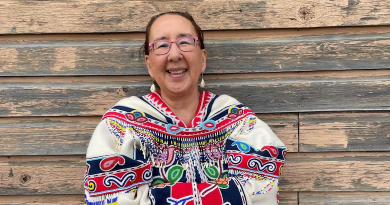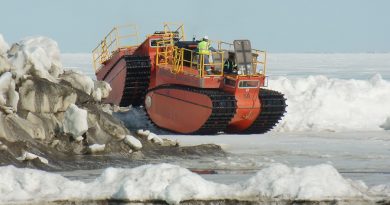Column: Journalists want to report on Barents region – Here’s why it’s not working

In basically every newsroom in the Barents region you can find journalists who are willing to report about what is going on in the neighboring countries of the Barents region.
Most likely they are not able to work the way they would wish. And there are reasons to that.
The Barents Mediasphere project has in a survey mapped out how much interest the journalists working in Finnish, Norwegian, Swedish and Russian Barents regions actually have in cross-border issues. The survey was sent to about 1300 journalists. Not surprisingly, most of them did not reply. But there were enough responses to make many conclusions from this questionnaire, first ever of its kind.
The reasons for not reporting are obvious: too scarce resources in media everywhere, no time or money to travel, and media houses put their priorities in local and domestic news. Still, the survey has some interesting and relevant findings.
The primary objective of the survey was to map the interest, possibilities and opportunities of journalists in the Barents region in reporting about Barents issues. With lacking knowledge of the reporters in the region and the survey being first of a kind, a secondary objective for the survey was set to map the ‘demographics’ of the journalists in the region. The survey mapped standard demographics, such as age, gender, location as well as profession related topics, such as ‘tools of trade’, organizational structures and cross-border networks of journalists. The survey was conducted in 1.8.2013 – 18.11.2013. The Arctic Centre received 259 responses (Finland 65, Norway 50, Russia 85 and Sweden 59). The response rate is quite low, roughly 20 %. Regardless of the low response rate, the survey offered intriguing insights into the reporters working in the region.
Middle aged Nordics, Young Russians
The secondary data tells an interesting story of the journalists in the region. The main finding of the survey concerning the demographics of the reporters in the area was the clear and definite difference between the Scandinavian countries and Russia. The clearest differences were seen in age and gender distributions as well as in the organizational structures of newsrooms in the region. A typical Scandinavian reporter in the region is a middle-aged man with a career of 20 years in journalism. The median age of Scandinavian respondents was 50 years, ranging from 46 years in Norway to 52 years in Sweden with Finland in the middle with 51 years. The median age for Russian respondents was significantly lower, 38 years and the typical respondent was a woman in mid-thirties with a decade of work experience in journalism. Age and gender distributions across the four countries had a notable correlation to one, perhaps not surprising, question; the use of media in journalist work. Younger and female journalists emphasized the use of social media (Facebook, Twitter, blogs…) whereas the more experienced and male journalists relied much more on traditional media on the national level.
Organizational structures were mapped by inquiring into newsroom size and scope (regional, national) as well as the positions and tasks of the respondents. This revealed differences between the four countries. The majority of Norwegian and Swedish respondents were part of small to medium newsrooms and were working as reporters. The Finnish respondents were working either in small newsrooms or very large newsrooms with staffs of over 50 persons. Only a small fraction of Finnish reporters were working in middle-sized newsrooms. Also, Finland had the highest relative number of respondents working in very large newsrooms compared to the other three countries. Similar to Sweden and Norway, the majority of Finnish respondents were working as reporters. The distribution of Russian respondents differed significantly from the Nordic countries as over 70 % of the respondents were working in small newsrooms. Only a handful of the Russian respondents were part of medium-sized or large newsrooms. These differences in newsroom sizes were also reflected in the current task of respondents as one third of Russian respondents were working as editors, whereas less than 10 % of the Nordic respondents were working as editors. This is probably related to the larger number of smaller newsrooms as well different labor structures in Russia, where editors are also members of journalist associations.
They want to cover the Barents region, but they cannot
The respondents across the four countries had one important view in common: they were all interested in writing about Barents issues. Despite the interest, writing about Barents related issues was rare among the respondents. The majority of respondents were writing about Barents issues roughly once a year or not at all. The respondents were asked their thoughts on the current media coverage on Barents issues. Again, the majority of respondents felt that the media coverage was inadequate. In summary, the majority of respondents in each of the four countries were interested in writing about Barents related issues and felt that the media coverage on these issues is inadequate. Despite the interest, the actual writing on these issues is extremely limited.
The respondents were asked what they considered to be the main obstacles in Barents reporting. The breakdown of these obstacles can be seen in Chart 1. The Nordic view on the main obstacles was rather uniform. Resources and domestic priority of reporting were considered to be the main obstacles. Russian respondents considered resources a lesser obstacle than their Nordic counterparts. The priority of domestic reporting was also a major factor for Russian respondents. Distances and lack of contacts were considered as major issues throughout the respondents. The issue of resources is perhaps not so surprising, but very interesting when related to the newsroom sizes and tasks. The Nordic respondents, while being members of medium or large newsrooms, considered the resources as the most significant obstacle. Meanwhile, Russian respondents working in small newsrooms did not view resources as a major obstacle.
It seems that in Nordic newsrooms every minute and every penny is counted and anything that goes beyond the «normal” scope of operations would be an extra task where time and money is not allocated. Each medium has strict concepts and modes of operation and also individual journalists have strictly defined tasks such as local reporting or layout. In Russia the journalists’ practices may be looser and thus allow more space for the individual journalists, especially when it comes to time resources.
As a conclusion it is obvious that even if there is notable interest to report more on cross border issues in the Barents region the reality of journalist work does not go into that direction. The potential interest can possibly help established cooperation structures – such as Barents Press International – to survive. The hidden interest also made it possible for a project like Barents Mediasphere to succeed: it was possible to find enough interested journalists to take part in the project activities. But without some extra boost such as a new international media project in the region or some institute facilitating the activities it is difficult to see how the average media houses or average journalists in the Barents region would be able to report or get experiences on cross border issues. Individual journalists who are interested in that approach can still make a difference but even for them the possibilities to operate are getting narrow. The tendency is towards a localized and regionalized media with very limited or no possibilities to report on regional cross border issues.
The Kolarctic ENPI financed Barents Mediasphere project run from 2012 to 2014. The lead partner was the Arctic Centre at the University of Lapland (Rovaniemi) and other partners BarentsObserver (Kirkenes) and GTRK Murman (Murmansk). The project organized a number of activities for journalists and media in the region to promote cross border information flow.
As the final activity the project has published a Barents Guide for journalists working in the region. The Guide also helps other interested audience to find media related information, including media maps and videos and cartoons about journalists working in the region. The guide can be found here: www.barentsinfo.org/guide
Related stories from around the North:
Canada: Politics, media misinformation & #sealfie, Eye on the Arctic
Russia: Nordic information office suspends activities in Russia, Barents Observer
United States: Proposed cuts to public broadcasting funding rile rural Alaska radio, Alaska Dispatch



